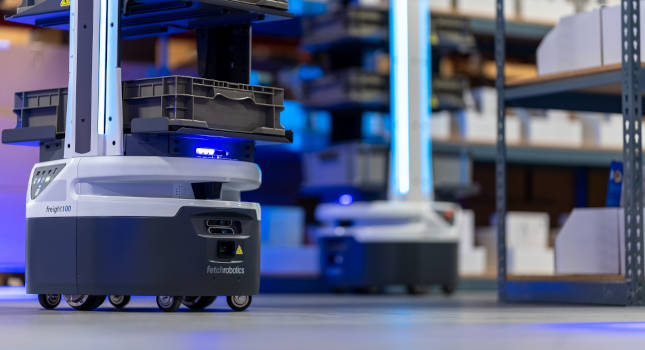As we stand on the cusp of a new era in technology, the integration of vision automation in robotics is reshaping the landscape of the future workplace. This dynamic synergy between vision automation and robotics promises to revolutionize industries, creating more efficient, productive, and adaptable work environments. In this exploration, we dive into the transformative potential of vision automation within the realm of robotics and its profound implications for the future of work.
Vision Automation and Robotics: A Seamless Partnership:
In the world of robotics, vision automation plays a pivotal role in enhancing the capabilities of machines. Traditional robots were often confined to pre-programmed tasks, with limited adaptability to dynamic or unpredictable environments. Vision automation changes this narrative by providing robots with the ability to see, interpret, and respond to their surroundings in real-time.
Vision automation in robotics involves the integration of advanced cameras, sensors, and machine learning algorithms. These components enable robots to perceive their environment, identify objects, and make intelligent decisions based on visual cues. The result is a more versatile and responsive automation system capable of handling diverse tasks in various industries.
Applications Across Industries: From Manufacturing to Healthcare:
Manufacturing: The manufacturing sector is witnessing a significant transformation with the incorporation of vision automation in robotics. Automated systems equipped with vision capabilities can perform intricate tasks such as quality control, defect detection, and assembly with unparalleled precision. This not only improves the overall production quality but also reduces the need for human intervention in repetitive and potentially hazardous tasks.
Healthcare: In healthcare, vision automation in robotics is contributing to advancements in diagnostics, surgery, and patient care. Robots equipped with vision systems can assist surgeons with precision surgeries, analyze medical imaging data for faster and more accurate diagnoses, and even handle routine tasks in healthcare facilities. This not only enhances the efficiency of healthcare services but also improves patient outcomes.
Enhancing Workplace Efficiency and Safety:
The integration of vision automation in robotics goes beyond task execution; it enhances workplace efficiency and safety. With the ability to perceive and respond to their surroundings, robots can navigate dynamic environments without the need for constant human supervision. This is particularly valuable in industries such as logistics and warehouses, where robots equipped with vision systems can optimize inventory management, automate material handling, and improve overall operational efficiency.
Logistics and Warehousing: Vision automation enables robots to navigate complex warehouse environments, identify items on shelves, and execute tasks such as picking and packing. This not only accelerates order fulfillment processes but also minimizes errors, leading to a more streamlined and cost-effective supply chain.
Safety: Vision-enabled robots contribute to improved workplace safety by accurately detecting and avoiding obstacles. This is especially critical in collaborative settings where humans and robots work together. Vision automation ensures that robots can adapt to the presence of humans, reducing the risk of accidents and enhancing overall workplace safety.
The Role of Vision Automation in Robotics in Shaping the Future of Work:
As industries continue to embrace automation, the role of vision automation in robotics becomes increasingly pivotal in shaping the future of work. This transformative technology is not about replacing human workers but rather augmenting their capabilities, freeing them from mundane and repetitive tasks and empowering them to focus on more complex, creative, and value-driven aspects of their jobs.
Adaptability: Vision automation equips robots with a level of adaptability that is crucial in a rapidly changing business landscape. These robots can be reprogrammed and redeployed for different tasks, making them valuable assets in industries characterized by evolving demands and production requirements.
Collaboration: The future workplace envisions a seamless collaboration between humans and robots. Vision-enabled robots can work alongside human counterparts, complementing their skills and contributing to a harmonious and efficient work environment. This collaborative approach not only enhances productivity but also fosters innovation and creativity.
Challenges and Considerations in Vision Automation for Robotics:
While the future of work with vision automation in robotics is promising, some challenges and considerations need to be addressed. These include:
Data Security and Privacy: Vision automation relies on extensive data collection and processing. Ensuring the security and privacy of this data is paramount, especially when dealing with sensitive information.
Ethical Considerations: As robots become more integrated into the workplace, ethical considerations surrounding their use, impact on employment, and decision-making capabilities need careful examination.
Technological Integration: Seamless integration of vision automation into existing systems requires careful planning and investment. Compatibility with current infrastructure and technologies is a critical consideration.
Final Thoughts:
In conclusion, the marriage of vision automation and robotics is paving the way for a new era of work. The future workplace will be characterized by adaptable, collaborative, and efficient systems where humans and robots coexist, each contributing their unique strengths. As industries continue to embrace this transformative technology, the potential for innovation, improved efficiency, and enhanced safety is boundless. Vision automation in robotics is not just a technological advancement; it is a catalyst for redefining the future of work and the way we perceive the roles of humans and machines in the workforce.


